Are you looking to bond with your furry friend while teaching them a fun trick? Teaching your dog to catch treats is a delightful and rewarding experience for both you and your canine companion. It’s an impressive skill that can be mastered through a combination of dog training techniques and positive reinforcement. In this article, I will guide you on how to teach your dog to catch treats, starting with the basics and gradually progressing to more advanced techniques.
Key Takeaways:
- Start with smaller, lightweight treats to avoid potential injury.
- Practice short training sessions three to five times a day.
- Gradually introduce toys for your dog to catch as they become proficient in catching treats.
- Choose the right treats that are motivating and delicious for your dog.
- Address any challenges your dog may face with patience and persistence.
The Basics of Teaching Your Dog to Catch Treats
Teaching your dog to catch treats can be a fun and engaging activity for both you and your furry friend. It not only provides mental stimulation but also strengthens the bond between you and your pet. In this section, I will guide you through the basics of teaching your dog to catch treats. From simple tossing techniques to building consistency, these training techniques will help you turn your dog into a pro at catching treats.
Start by sitting your dog about two feet in front of you. Hold his favorite treat in your hand and gently toss it towards him. I recommend that you use lightweight treats to avoid any potential injury. If your dog doesn’t catch the treat, quickly scoop it up before he can get to it. This will incentivize him to catch it in the air. Repeat this process about five times during each short training session, and aim for three to five sessions per day.
Consistency is key when teaching your dog to catch treats. Make sure to have regular training sessions and gradually increase the difficulty by tossing the treat from different angles or at varying speeds. With time and practice, your dog will start to anticipate the treat and learn to catch it in the air. Don’t forget to reward your dog with praise and additional treats when he successfully catches one.
“Teaching your dog to catch treats is not only a fun activity but also a great way to build trust and communication between you and your furry companion.”
To put it simply, teaching your dog to catch treats should be a positive and enjoyable experience for both of you. Keep the training sessions short, about 5-10 minutes each, and always end on a positive note. Celebrate even the smallest progress and be patient, as every dog learns at their own pace. With dedication and the right training techniques, you’ll soon have a dog that can catch treats like a pro!
Table: Training Techniques for Teaching Your Dog to Catch Treats
| Training Technique | Description |
|---|---|
| Tossing Technique | Gently toss the treat towards your dog and encourage him to catch it in the air. |
| Consistency | Regularly practice short training sessions and gradually increase the difficulty. |
| Reward-Based Training | Use praise and additional treats to reward your dog when he successfully catches the treat. |
| Patient and Positive Environment | Keep the training sessions positive, enjoyable, and celebrate even the smallest progress. |

Progressing to Catching Toys
Once your dog is consistently catching treats, you can progress to teaching him to catch toys. This adds an extra level of fun and challenge to his training routine. Start with lightweight toys such as tennis balls or cloth discs. These toys are easy to catch and won’t cause any harm if accidentally hit your dog’s face.
To teach your dog to catch toys, follow the same techniques you used for teaching him to catch treats. Sit your dog about two feet in front of you, hold the toy in your hand, and gently toss it towards him. Encourage him to catch the toy in the air by using positive reinforcement and rewarding him when he successfully catches it.
As your dog becomes more proficient in catching toys, you can gradually increase the difficulty by using different types of toys. For example, you can try using frisbees or flying discs that require more precision and coordination to catch. Try to always use reward-based training and positive reinforcement to reinforce the desired behavior.
Benefits of Teaching Your Dog to Catch Toys
- Enhances coordination and motor skills
- Provides mental stimulation and enrichment
- Strengthens the bond between you and your dog
- Boosts your dog’s confidence and self-esteem
- Can be a great opportunity for exercise and play
Tips for Progressing to Catching Toys
- Start with lightweight toys such as tennis balls or cloth discs.
- Use the same techniques you used for teaching your dog to catch treats.
- Gradually increase the difficulty by using different types of toys.
- Always use reward-based training and positive reinforcement.
- Practice regularly and have patience with your dog’s learning process.

| Toy Type | Description |
|---|---|
| Tennis Ball | Lightweight and easy to catch. Perfect for beginners. |
| Cloth Disc | Soft and safe. Great for indoor play and catching practice. |
| Flying Disc | Requires more precision and coordination to catch. Provides advanced challenges for your dog. |
| Frisbee | Similar to a flying disc but usually made of hard plastic. Suitable for dogs with more experience in catching toys. |
Catching toys can be a rewarding and enjoyable experience for both you and your dog. Try to always prioritize safety, have patience, and make the training sessions fun and engaging. With consistent practice and positive reinforcement, your dog will become a master at catching toys in no time!
Choosing the Right Treats for Training
When it comes to teaching your dog to catch treats, selecting the right treats for training is crucial. The type of treat you choose can greatly impact your dog’s motivation and success in learning this trick. Here are a few key factors to consider when choosing treats for training:
- Size: Opt for smaller, bite-sized treats that are easy for your dog to catch and swallow. This will make it more convenient and manageable for your furry friend during training sessions.
- Texture: Look for treats that are soft or can be easily broken into smaller pieces. This allows your dog to quickly consume the treat after catching it, ensuring a smooth and seamless training experience.
- Taste: Choose treats that your dog finds highly motivating and delicious. Experiment with different flavors and varieties to find what your dog enjoys the most. The more enticing the treat, the more eager your dog will be to catch it.
Positive reinforcement plays a significant role in training your dog to catch treats. By rewarding your dog with a tasty treat every time he successfully catches one, you are reinforcing the desired behavior and creating a positive association with catching treats. This encourages your dog to continue practicing and improving his catching skills.
To put it simply, the key to successful treat training is to make it fun and rewarding for your dog. Keep training sessions short, frequent, and enjoyable. Celebrate every successful catch and provide plenty of praise and affection. With patience, consistency, and the right treats, your dog will become a pro at catching treats in no time!
| Treats for Training | Pros | Cons |
|---|---|---|
| Small, bite-sized treats | – Easy for dogs to catch and swallow – Convenient for training |
– May not be as enticing for some dogs – Limited variety |
| Soft treats | – Quick to consume after catching – Easy to break into smaller pieces |
– Can be messy during training – Some dogs may not enjoy the texture |
| Tasty and motivating treats | – Keeps dogs engaged and excited – Reinforces positive behavior |
– Some treats may be high in calories – Expensive for regular use |
Try to always consider your dog’s individual preferences and dietary needs when selecting treats for training. Consult with your veterinarian if you have any concerns or questions about the best treats for your dog. By choosing the right treats and using positive reinforcement, you can make the training process enjoyable and rewarding for both you and your furry companion.
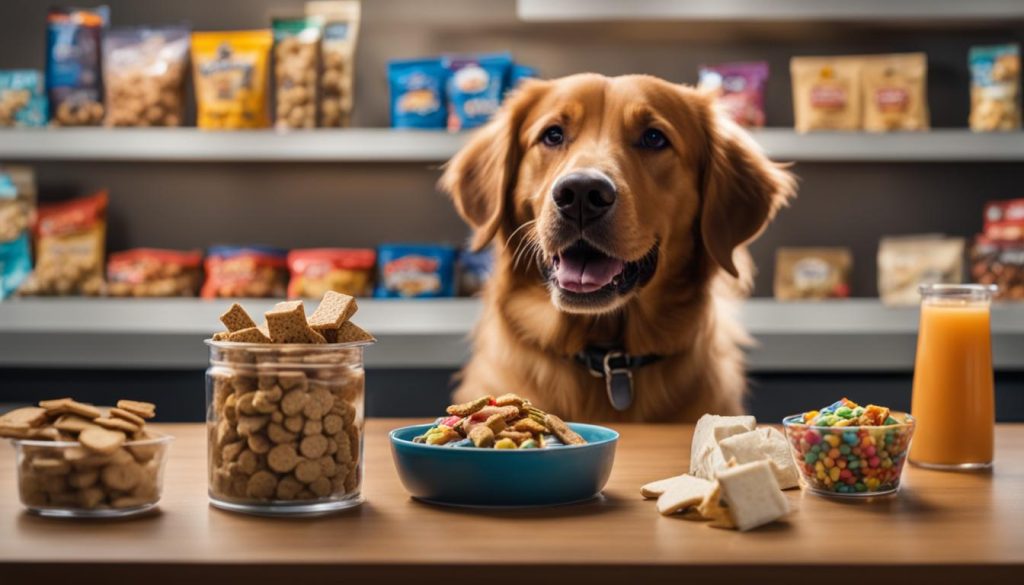
Addressing Common Challenges
While teaching your dog to catch treats can be a fun and rewarding experience, some dogs may face challenges along the way. Here are a few common challenges you might encounter and some tips to address them:
1. Difficulty in catching treats
If your dog is struggling to catch treats, try adjusting the distance or speed of the toss. Start with shorter distances and slower throws, gradually increasing the difficulty as your dog improves. Providing clear visual cues and using a verbal command, such as “catch,” can also help your dog anticipate the treat and improve their catching skills.
2. Fear or hesitation
Sometimes, dogs may be fearful or hesitant to catch treats due to their past experiences or natural instincts. In such cases, create a positive and safe training environment. Use high-value treats that your dog finds particularly enticing and rewarding. Break the training down into smaller steps, rewarding your dog for any progress they make, no matter how small. Patience and encouragement can go a long way in building your dog’s confidence.
3. Lack of motivation
If your dog seems uninterested or unmotivated to catch treats, it may be time to switch up the rewards. Experiment with different types of treats or use a variety of rewards such as praise, toys, or playtime. Find out what motivates your dog the most and use it as a means to encourage them to catch treats. Training sessions should be engaging, fun, and tailored to your dog’s preferences.
To put it simply, every dog is unique and may require different approaches. Be patient, consistent, and always end each training session on a positive note. Celebrate small successes, and over time, your dog will become more skilled at catching treats.
| Challenge | Tips |
|---|---|
| Difficulty in catching treats | – Adjust distance and speed of toss – Use clear visual cues and verbal command – Gradually increase difficulty |
| Fear or hesitation | – Create a positive and safe training environment – Use high-value and enticing treats – Break training into smaller steps |
| Lack of motivation | – Experiment with different types of treats – Use a variety of rewards – Make training sessions engaging and tailored |
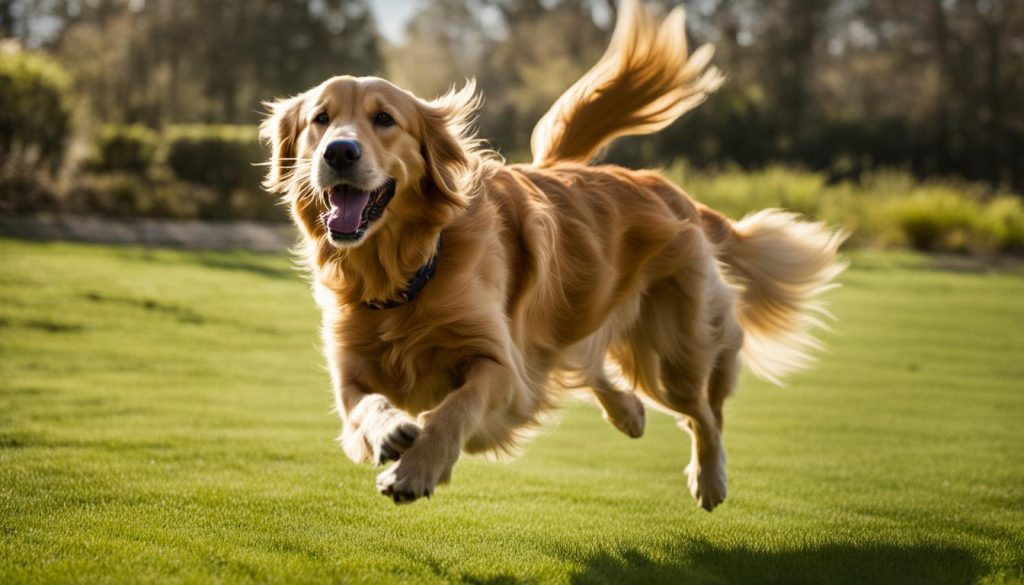
“Training a dog to catch treats requires patience, understanding, and adaptability. Each dog learns at their own pace, and tailor the training approach to their individual needs. Celebrate the small victories and continue to provide positive reinforcement to create a rewarding training experience for both you and your furry friend.”
– Dr. Sarah Johnson, Canine Behavior Specialist
Safety Considerations
When it comes to teaching your dog to catch treats, safety should always be a top priority. Here are some important considerations to keep in mind:
Choosing Safe Toys and Treats
When selecting toys for your dog to catch, opt for lightweight options that won’t cause harm if accidentally hit your dog’s face. Tennis balls and cloth discs are great choices to start with. Also, be mindful of the treats you use. Look for bite-sized treats that are easy for your dog to catch and swallow. Make sure they are something your dog finds highly motivating and delicious.
Supervising Training Sessions
Always supervise your dog during training sessions to ensure their safety. This allows you to intervene if any issues arise or to prevent them from swallowing toys or treats whole. It’s also a good opportunity to provide immediate positive reinforcement when your dog successfully catches a treat.
Gradual Progression
As your dog becomes more skilled at catching treats, you can gradually increase the difficulty by using different toys or tossing treats at a higher speed. This helps to keep the training challenging and engaging for your furry friend. Just remember to always prioritize their safety and well-being throughout the process.
| Key Safety Considerations | Explanation |
|---|---|
| Choose lightweight toys | Lightweight toys minimize the risk of injury if accidentally hit your dog’s face. |
| Use bite-sized treats | Opt for treats that are easy for your dog to catch and swallow. |
| Supervise training sessions | Always be present during training to ensure your dog’s safety and provide immediate reinforcement. |
| Gradually increase difficulty | As your dog progresses, introduce different toys and increase the challenge. |
By following these safety considerations, you can create a positive and secure training environment for your dog, allowing them to learn and have fun while catching treats.
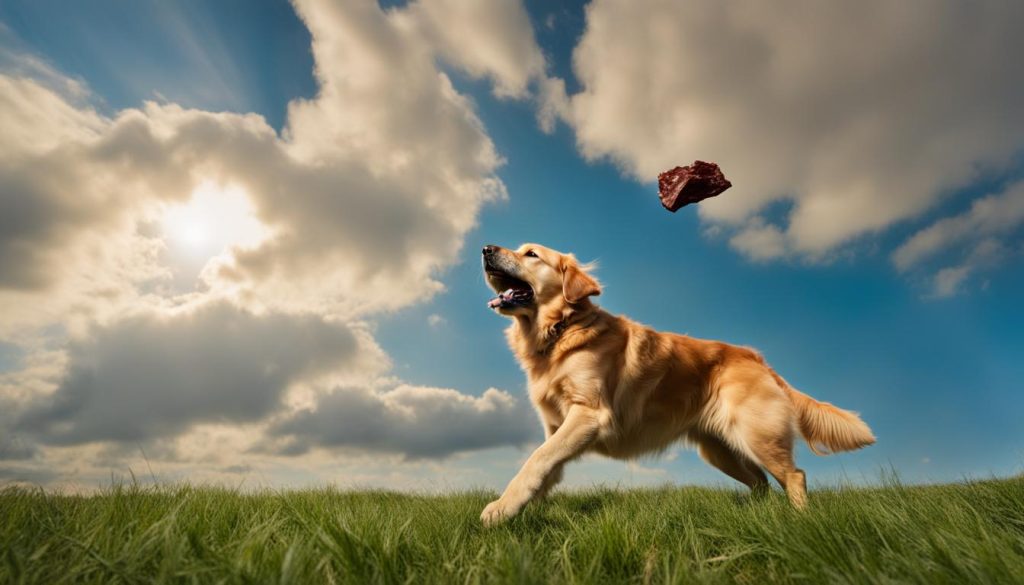
Training Tips from Experts
When it comes to teaching your dog to catch treats, expert trainers have some valuable advice to share. Incorporating tricks into your dog’s training routine can help keep it fun and engaging. AKC GoodDog! Helpline Trainer Milena Barreto recommends teaching your dog a variety of tricks, including catching treats. This not only strengthens the bond between you and your furry friend but also provides mental stimulation for your dog.
Experts also suggest enrolling in training programs or seeking guidance from experienced dog trainers. These professionals can provide additional support and valuable insights into training techniques. They can help tailor the training process to suit your dog’s individual needs and offer guidance on overcoming any challenges that may arise.
To put it simply, when it comes to training your dog, patience and consistency are key. By following the advice of experts, you can create a positive and rewarding training environment for your dog to learn and master the art of catching treats.
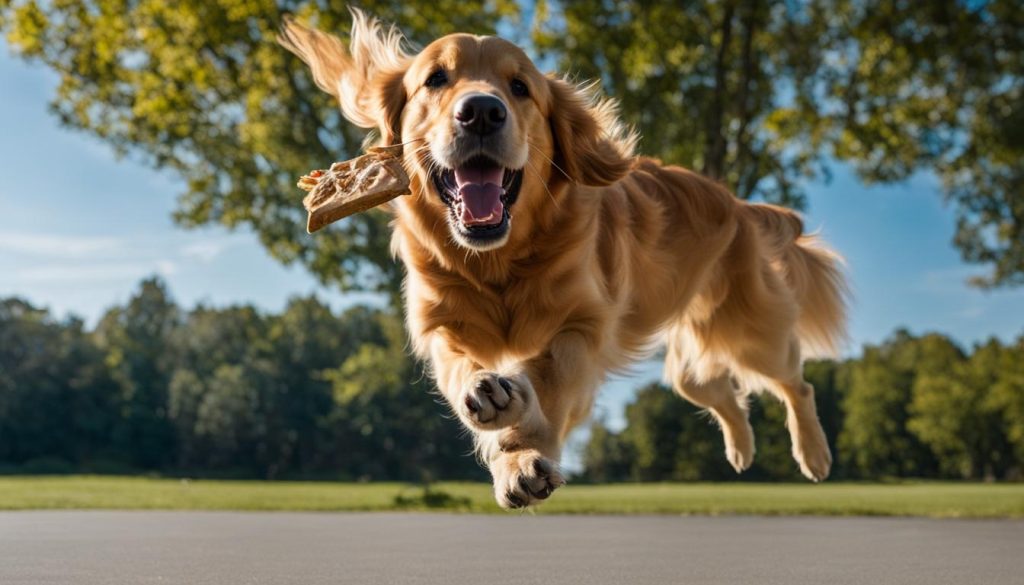
Tips from AKC GoodDog! Helpline Trainer Milena Barreto:
- Start with shorter training sessions three to five times a day.
- Use lightweight and smaller treats or toys for safety.
- Gradually increase the difficulty by introducing different toys or treats.
- Praise and reward your dog for each successful catch.
Using Popcorn as a Training Tool
When it comes to training your dog to catch treats, one often overlooked tool is popcorn. Popcorn can be a useful aid in teaching this skill as it is lightweight and moves more slowly through the air, making it easier for your dog to track and catch with their eyes. Plain, air-popped popcorn is safe for dogs to eat in small quantities, and it can be a great stepping stone before transitioning to smaller dog treats or pieces of kibble.

If you’re wondering how to incorporate popcorn into your training sessions, here is a step-by-step guide to help you teach your dog to catch popcorn:
- Have your dog sit about two to three feet in front of you.
- Hold a piece of popcorn high above your dog’s head.
- Start by dropping the popcorn down for your dog to catch.
- Once your dog consistently catches the popcorn, begin tossing it in an arc for them to catch in the air.
- If the popcorn falls on the floor, try to grab it quickly before your dog can get to it, motivating them to catch it instead.
- Practice this technique with repetition and dedication, gradually increasing the difficulty by tossing the popcorn at a higher speed and from different angles.
With patience and positive reinforcement, your dog will learn to catch popcorn like a pro. To put it simply, every dog learns at their own pace, so be sure to create a supportive and rewarding training environment. Enjoy the process and have fun bonding with your furry friend!
Step-by-Step Guide to Teaching Your Dog to Catch Popcorn
Teaching your dog to catch popcorn can be a fun and exciting addition to their training routine. I recommend that you start with a solid foundation of basic training techniques and positive reinforcement before progressing to this advanced trick. Follow the step-by-step guide below to teach your dog how to catch popcorn like a pro.
Step 1: Establish a Strong Sit Command
Prior to teaching your dog to catch popcorn, ensure they have a strong understanding of the sit command. Practice this command in various locations and gradually increase distractions to ensure your dog can remain focused even in stimulating environments. A consistent and reliable sit command will provide a solid foundation for your dog’s catching skills.
Step 2: Introduce Popcorn as a Reward
Start by using popcorn as a high-value reward during training sessions. Show your dog the popcorn and encourage them to watch it closely. Toss a piece of popcorn gently towards them. If your dog catches it in their mouth, praise and reward them with additional popcorn or a special treat. If your dog doesn’t catch it, don’t worry. Simply guide them to the dropped popcorn and reward them for any interaction with it, gradually building up to catching it in the air.
Step 3: Practice Tossing and Catching
Once your dog is comfortable with catching popcorn from a short distance, gradually increase the height and distance of your tosses. Start by tossing the popcorn just above your dog’s head and gradually increase the height. As your dog becomes more confident, practice tossing the popcorn at different angles, simulating real-life situations where they may need to track and catch objects in motion. Try to reward your dog with praise and treats for successful catches.
| Tips for Teaching Your Dog to Catch Popcorn |
|---|
| 1. Use small, lightweight popcorn pieces for easier catches. |
| 2. Keep training sessions short and frequent to maintain your dog’s focus and motivation. |
| 3. Use a consistent verbal cue, such as “catch” or “get it,” to signal to your dog that they should prepare to catch the popcorn. |
| 4. Gradually increase the difficulty of the tosses to keep your dog challenged and engaged. |
| 5. Always reward your dog for their effort, even if they don’t catch the popcorn. Encouragement and positive reinforcement are key. |
With patience, consistent practice, and positive reinforcement, your dog can become a master at catching popcorn. To put it simply, every dog learns at their own pace, so be sure to tailor the training to match your dog’s abilities and comfort level. Enjoy the training process and celebrate your dog’s progress along the way!

Progressing to Catching Dog Toys and Tennis Balls
Once your dog has mastered catching treats and popcorn, you can progress to teaching them how to catch dog toys and tennis balls. This advanced level of training will enhance your dog’s agility and coordination while providing mental stimulation and physical exercise.
To begin, select lightweight and smaller dog toys that are easy for your dog to catch in mid-air. Tennis balls are also a popular choice due to their size and bounce. Introduce the toy or tennis ball to your dog and let them inspect and play with it to build excitement and engagement.
When your dog is ready, hold the toy or tennis ball in your hand and toss it gently towards them. Encourage your dog to catch the toy by using positive reinforcement techniques such as praise or a small treat. Repeat this process multiple times during each training session, gradually increasing the distance and speed of the throw as your dog progresses.
Try to reinforce the desired behavior by using rewards and praise. Dogs thrive on positive reinforcement, so make sure to acknowledge and celebrate their success each time they successfully catch a toy or tennis ball. With consistency and patience, your dog will become more proficient at catching and retrieving objects, showcasing their impressive tricks and skills.

Tips for Successful Training:
- Start with lightweight and smaller dog toys or tennis balls to make it easier for your dog to catch.
- Gradually increase the difficulty by using toys or balls of different sizes and weights.
- Use positive reinforcement techniques such as praise, treats, or a clicker to reward your dog for catching the toy.
- Practice short training sessions multiple times a day to keep your dog engaged and motivated.
- Be patient and consistent with your training, as each dog learns at their own pace.
- Seek guidance from experienced trainers or enroll in training programs for additional support and advice.
Enjoy the Training Process
Teaching your dog to catch treats is a journey that can be filled with joy and excitement. It’s a chance to bond with your furry friend while watching them learn and grow. Try to approach the training process with patience and a positive attitude. Dogs can sense your energy, so staying calm and encouraging will help create a comfortable environment for them to succeed.
During training sessions, celebrate every small achievement. Whether your dog catches a treat for the first time or improves their catching skills, acknowledge their progress with praise and rewards. Positive reinforcement, such as verbal praise or a small treat, goes a long way in motivating your dog to continue working on this impressive trick.
Keep in mind that every dog learns at their own pace. Some may catch on quickly, while others may require more time and practice. Be patient and understanding, and always adjust your training techniques to suit your dog’s abilities and comfort level. The key is to have fun and enjoy the process together.
Training Tips:
- Set aside dedicated time for training sessions each day.
- Start with short sessions and gradually increase the duration as your dog becomes more comfortable with catching treats.
- Use high-value treats that your dog finds extra motivating.
- Practice in a distraction-free environment to help your dog focus.
- Be consistent with your cues and commands.
Training Quote:
“Training your dog to catch treats is not just about the end result. It’s about the journey you take together, the bond you strengthen, and the joy you share. Embrace each step, celebrate every success, and cherish the unforgettable moments along the way.” – Dog Training Expert
To sum it up, teaching your dog to catch treats is a rewarding experience that can deepen your connection with your canine companion. By approaching the training process with patience, positivity, and consistency, you can help your dog master this impressive trick. Try to enjoy the training sessions, celebrate your dog’s progress, and create a positive and rewarding learning environment. Have fun and cherish the special moments as you embark on this training adventure with your furry friend.
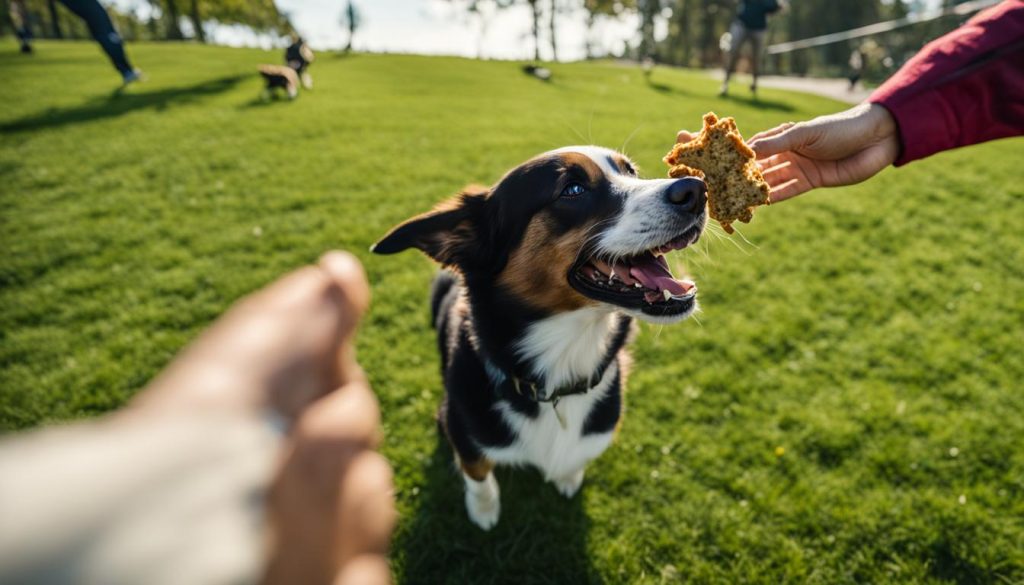
Final Thoughts
Teaching your dog to catch treats is an exciting journey that strengthens the bond between you and your furry companion. With the right dog training techniques and positive reinforcement, you can successfully teach your dog this impressive trick. Try to prioritize your dog’s safety and enjoyment throughout the training process.
By starting with smaller treats and gradually progressing to catching toys, you can help your dog develop the skills needed to catch treats in the air. Patience and consistency are key, as every dog learns at their own pace. Celebrate each small success and make training sessions a fun and rewarding experience for both you and your dog.
Don’t forget to explore other dog tricks and incorporate them into your training routine. Seeking guidance from experienced trainers or enrolling in training programs can provide valuable support and advice. Try to use reward-based training methods and create a positive environment for your furry friend. Enjoy the process and continue to discover new training opportunities with your four-legged companion.
FAQ
What treats should I use for teaching my dog to catch?
Opt for smaller, bite-sized treats that are easy for your dog to catch and swallow. Soft treats or treats that can be easily broken into smaller pieces are ideal.
How do I start teaching my dog to catch treats?
Sit your dog about two feet in front of you, hold a treat in your hand, and toss it gently towards him. Repeat this process about five times and have short training sessions throughout the day.
Can I use toys to teach my dog to catch?
Yes, once your dog is consistently catching treats, you can start introducing lightweight and smaller toys for him to catch. Use the same techniques as with treats.
What should I do if my dog is struggling to catch treats?
Adjust the distance or speed of the toss, use a verbal cue, and be patient. Celebrate small successes and continue to practice regularly to overcome challenges.
How do I ensure my dog’s safety during training?
Avoid throwing toys or treats that may cause injury if they hit your dog’s face. Start with lightweight and smaller objects. Always supervise your dog during training sessions.
Are there any training tips from experts?
Yes, experts recommend incorporating tricks into your dog’s training routine, enrolling in training programs, and seeking guidance from experienced dog trainers.
Can I use popcorn as a training tool?
Yes, popcorn can be a useful tool for teaching your dog to catch treats. Start with plain, air-popped popcorn and gradually increase the difficulty.
How do I teach my dog to catch popcorn?
Have your dog sit about two to three feet in front of you, hold the popcorn high above his head, and start by dropping it down for him to catch. Practice this technique with repetition and dedication.
Can my dog progress to catching dog toys and tennis balls?
Yes, once your dog becomes comfortable catching treats and popcorn, you can progress to catching dog toys and tennis balls. Start with smaller, lightweight toys and use the same techniques.
How important is it to enjoy the training process?
You should prioritize your dog’s safety and enjoyment during training sessions. Celebrate each small success and have fun while teaching your dog this impressive trick.






